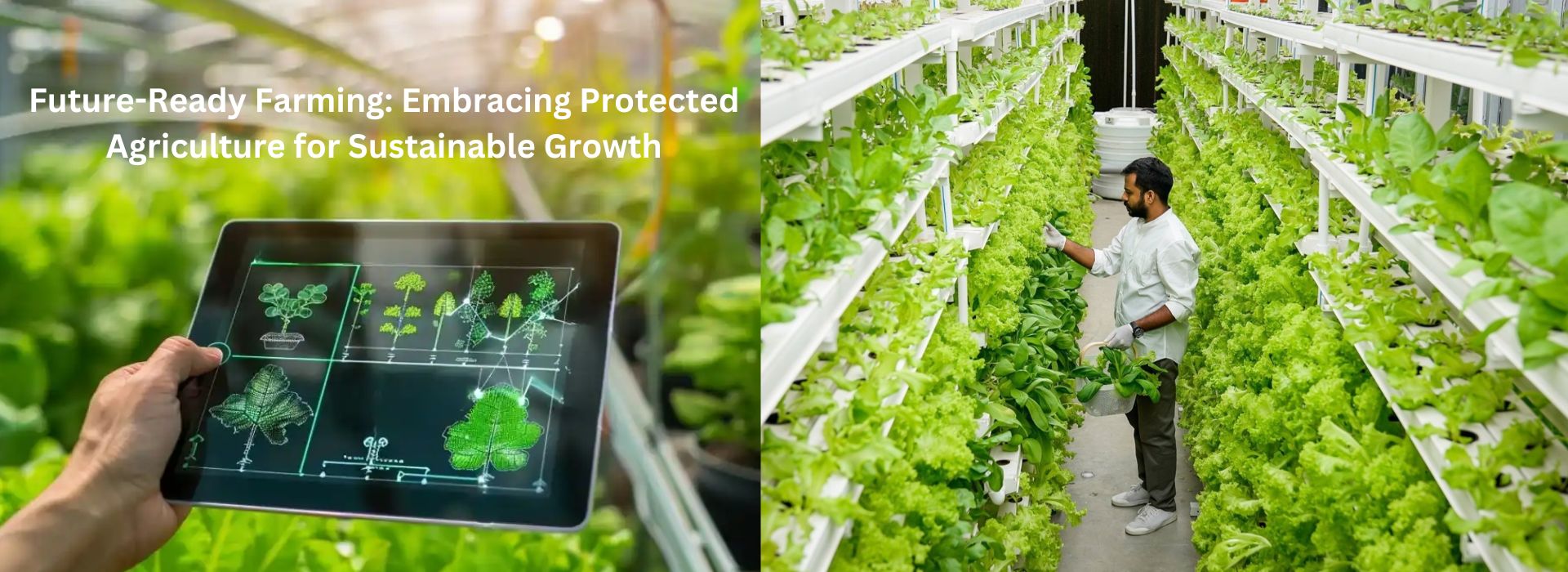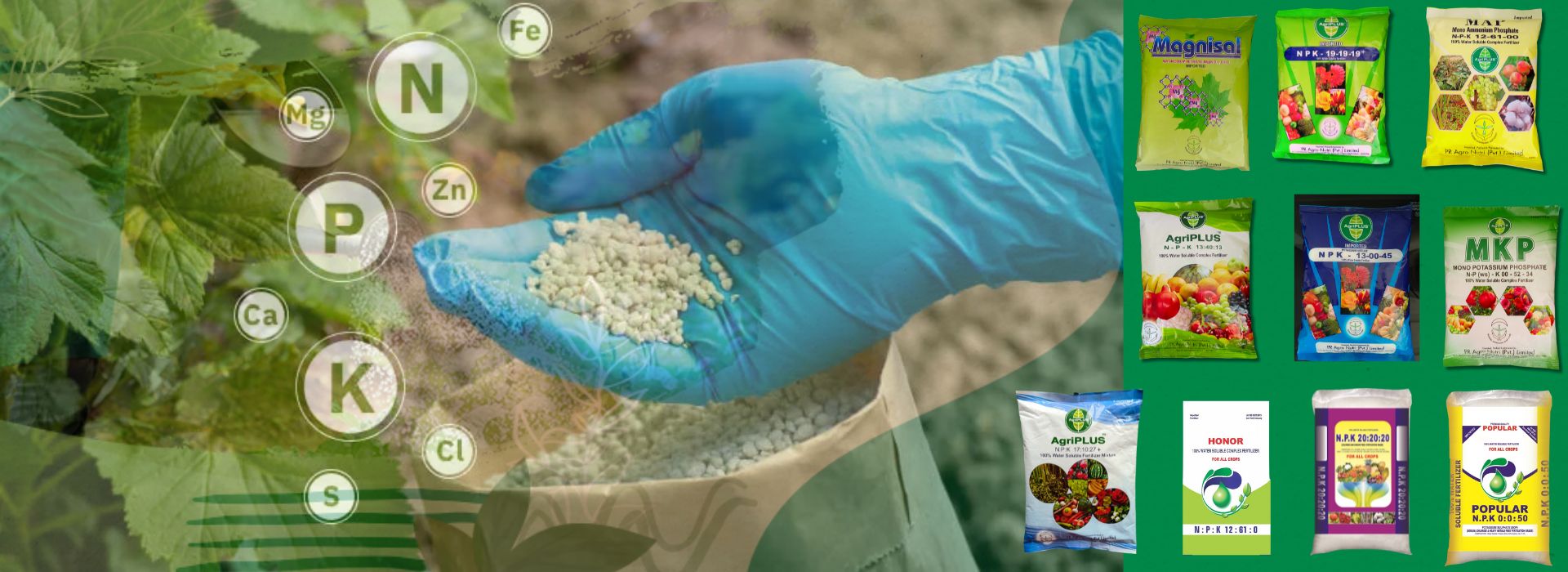Future-Ready Farming: Embracing Protected Agriculture for Sustainable Growth
February 5, 2025Future-Ready
Farming: Embracing Protected Agriculture for Sustainable Growth
As climate change, erratic weather
patterns, and resource limitations pose increasing challenges to agriculture,
farmers worldwide are looking for innovative solutions to ensure food security
and profitability. Protected agriculture is emerging as a game-changer,
offering a sustainable way to enhance yields, improve quality, and mitigate
environmental risks.
In India, where agriculture is the
backbone of the economy, protected farming is gaining traction as farmers shift
from traditional open-field cultivation to greenhouses, polyhouses, net
houses, and hydroponics. These modern techniques not only shield crops from
adverse weather conditions but also optimize resource use, making farming more
efficient, profitable, and sustainable.
Let’s explore the concept,
benefits, and key protected agriculture methods shaping the future of
Indian farming.
What is Protected
Agriculture?
Protected agriculture refers to the
practice of cultivating crops in controlled environments that safeguard them
from extreme weather, pests, and diseases. These structures create an optimal
microclimate, regulating temperature, humidity, and light exposure, leading
to higher yields and better-quality produce.
Farmers in India are increasingly
adopting protected farming techniques to overcome challenges like:
✅
Unpredictable monsoons
✅
Soil degradation
✅
Water scarcity
✅
Pest infestations
✅
Market fluctuations
By investing in climate-smart
agriculture, farmers can ensure year-round production, reduce losses, and
improve income stability.
Types of
Protected Agriculture Methods in India
1. Greenhouses
A greenhouse is a transparent
structure made of glass or polyfilm that provides a controlled environment for
growing high-value crops like tomatoes, bell peppers, and exotic vegetables.
- Benefits:
- Shields crops from extreme weather and
pests
- Allows off-season production
- Enhances productivity by up to 3-4 times
2. Polyhouses
Polyhouses are low-cost
alternatives to greenhouses, constructed using polyethylene sheets. They
are widely used for cultivating flowers, fruits, and vegetables.
- Benefits:
- Affordable and easy to set up
- Retains moisture and temperature
- Reduces water and fertilizer consumption
3. Net Houses
(Shade Nets)
Net houses are structures covered
with UV-stabilized netting that protect crops from harsh sunlight, wind,
and pests. They are ideal for growing nursery plants, herbs, and leafy
greens.
- Benefits:
- Prevents sunburn and dehydration of
plants
- Lowers disease incidence
- Reduces pesticide use
4. Hydroponics
and Aquaponics
Hydroponics is a soil-less farming
method where plants grow in nutrient-rich water solutions, while aquaponics
integrates fish farming with hydroponic plant cultivation.
- Benefits:
- Saves up to 90% water compared to
soil farming
- Increases plant growth rate and yield
- Ideal for urban and rooftop farming
5. Vertical
Farming
Vertical farming involves growing
crops in stacked layers using controlled-environment agriculture (CEA). It
is particularly useful in urban areas where land availability is limited.
- Benefits:
- Maximizes space efficiency
- Reduces dependency on arable land
- Lowers transportation costs for fresh
produce
Advantages of
Protected Agriculture
✅ Higher Yields & Quality – Crops
grown in protected environments experience less stress, leading to
better quality and up to 5 times higher yield compared to open-field
farming.
✅ Efficient Water Use – Drip irrigation
and hydroponics significantly reduce water wastage, making protected
farming an excellent solution for drought-prone areas.
✅ Reduced Pesticide Dependency –
Controlled environments lower pest attacks, minimizing the need for chemical
pesticides and promoting organic farming.
✅ Year-Round Production – Farmers are no
longer dependent on seasonal cycles, ensuring continuous supply and
stable income.
✅ Climate Resilience – Protected
structures shield crops from heatwaves, heavy rains, hailstorms, and frost,
reducing yield losses.
✅ Better Market Opportunities –
High-quality, pesticide-free produce fetches premium prices in domestic
and export markets.
Challenges &
Solutions in Adopting Protected Farming
|
Challenges |
Solutions |
|
High initial investment |
Government subsidies & bank
loans |
|
Lack of technical knowledge |
Training programs & agricultural
extension services |
|
Maintenance costs |
Choosing cost-effective structures
like polyhouses |
|
Market access issues |
Strengthening farm-to-market
linkages & contract farming |
Government
Support for Protected Agriculture in India
To encourage modern farming, the
Indian government offers subsidies under various schemes:
✔
National Horticulture Mission (NHM)
✔
Rashtriya Krishi Vikas Yojana (RKVY)
✔
Pradhan Mantri Krishi Sinchayee Yojana (PMKSY)
These programs help farmers set up
greenhouses, polyhouses, and hydroponic farms at subsidized rates.
The Future of
Protected Farming in India
As India moves towards sustainable
agriculture, protected farming will play a crucial role in:
🌱
Boosting food production to meet growing demand
💧
Conserving natural resources through precision farming
👩🌾 Empowering small farmers with
innovative techniques
🌍
Reducing carbon footprints by optimizing inputs
With advancements in automation,
IoT, and AI-driven farming, protected agriculture is set to revolutionize
Indian farming in the coming decades.
Conclusion
Protected
agriculture is the future of farming in India. By investing in modern cultivation methods,
farmers can overcome climate challenges, increase productivity, and ensure a sustainable
livelihood.
For those looking to transition to future-ready
farming, embracing protected agriculture is not just an option—it’s a
necessity.
Are you ready to
adopt protected farming? Share your thoughts and experiences in the comments! 🌾💚
At krishibazaar.in, you
can find and buy various agricultural products. For agricultural guidance on
selecting the most suitable products for your crops, please contact or WhatsApp
at +917887880887






Guest reviews
No reviews found for this Blog